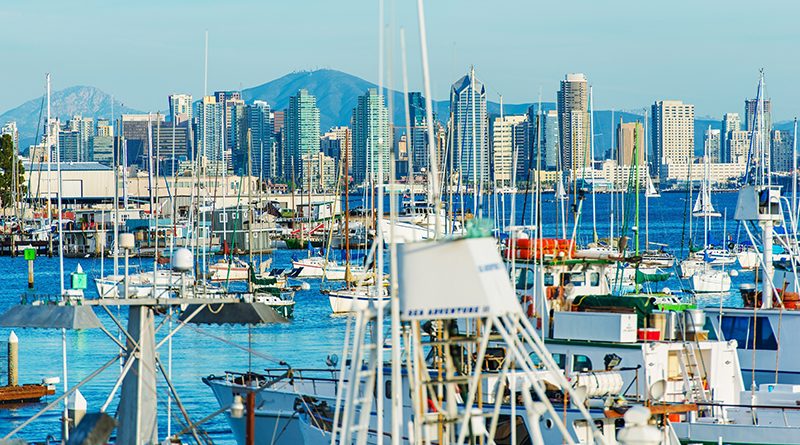Sixteen-week Water Quality Survey Shows No Difference in Copper Reduction Following Eight-Week Pause on In-Water Hull Cleaning
The Commission implemented a temporary pause for in-water hull cleaning from Dec. 19, 2021-Feb. 9, as part of a 16-week study of copper levels in the basin as a part of an ongoing initiative to lower the Total Maximum Daily Load of copper in the bay.
SAN DIEGO— The Port of San Diego Board of Port Commissioners heard the findings of a recent study from an eight-week pause for in-water hull cleanings on boats with copper-based paints as the port comes up on a 2022 deadline to reduce overall copper levels in the bay by 76 percent.
The port has been able to meet the first two levels of TMDL reaching 40 percent by 2017. The new study indicates that levels have fluctuated without a significant decrease over the past three or four years, leaving the port at a load reduction rate between 40-50 percent and about 20 percent shy of its goal.
The deadline to reach 76 percent of lowered copper reduction levels is six months away, and the pause on in-water hull cleanings had a minimal effect on copper levels leaving the port at stalemate.
A Dissolved Copper Total Maximum Daily Load for the Shelter Island Yacht Basin set by the regional water board in 2005 due to copper levels that exceeded federal and state water quality standards requires a 76 percent reduction of copper loading by Dec. 2022.
The in-water hull cleaning survey findings were presented as part of a yearly presentation about the progress toward lowering the copper levels in the port.
The study came about after 2013 findings theorized that a pause on in-water hull cleaning in the basin for a period of time would decrease the levels of copper in the basin. The 2013 study found that dissolved copper leach rates were enhanced during the cleaning and for two to three days after.
Previous findings found that five percent of the annual dissolved copper load came from in-water hull cleaning of copper-based anti-fouling paint, while 93 percent of copper came from passive leaching of copper-based AFPs.
After a request from stakeholders, the study was implemented and ran for 16 weeks with four weeks of monitoring before and after the pause and an eight-week pause from Dec. 19, 2021, – Feb. 9 on all in-water hull cleaning of boats with copper-based paints.
During the study, there were over 200 inspections made to the marinas and yachts clubs to ensure compliance with the pause.
Water quality was sampled weekly at 20 different stations throughout the basin. Studies showed slight decreases throughout the inner and middle parts of the basin, with no significant decrease on the outer parts of the basin.
“Even with some of the slight decreases that were observed, the averages, as you see here, remained consistent with the levels of copper that we tend to see within our annual monitoring, and they did not approach the water quality standard,” said Karen Holman, director of environmental protection for the port.
The study ultimately found that the changes in water quality from the pause on hull cleaning seemed minor compared to the copper dissolved from passive leaching.
The port finds that the biggest challenge moving forward is the continued use of copper paint, a preferred paint, as it is an effective method for deterring marine growth. With the popularity of the paint, places with a high density of boats seem to have elevated levels of copper and a significantly hard time reducing those levels.
“It is clear that it is not just an issue that is here,” said Holman. “It is anywhere there is boats, and anywhere there is boats that are concentrated in areas, Marina del Rey is facing similar issues as is Newport Bay.”
The regulation on copper levels allowed in paint is conducted by the California Department of Pesticide Regulation which changed the levels in 2018. However, the phase-out of the older formula is still occurring, and according to Holman, the port has yet to see the effect of that phase-out.
“We have taken the program about as far as we can; given the challenges with copper paint, we need support of the regulatory agencies,” said Holman.
The next plan for the port is to meet with the regional board to understand their expectations and plans for further engagement with the Department of Pesticide Regulation.
The study is open for comment through July 22, and once the port has a chance to look at all the comments, the study will be updated and reposted on the port website.
Learn more here https://bit.ly/2nZJ9jb


